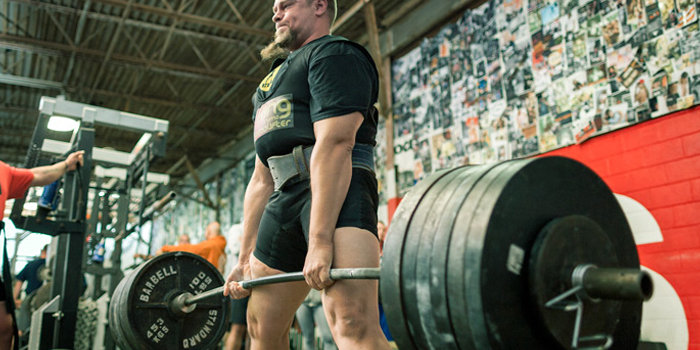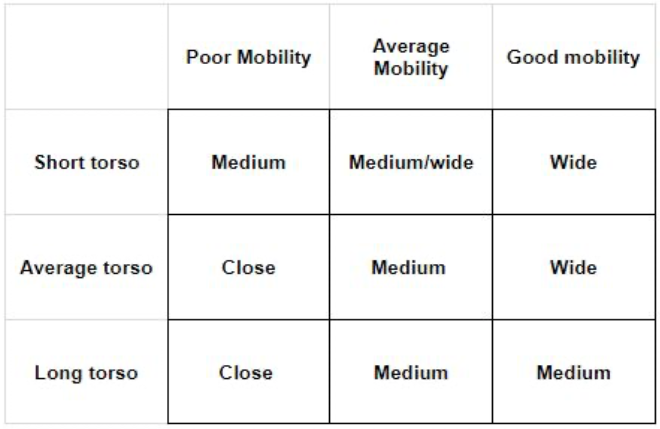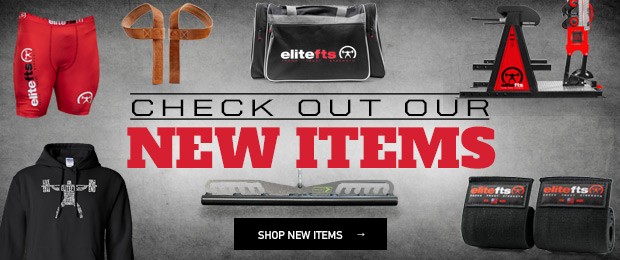
 The sumo deadlift has been wrongly vilified. It has been called easier than a traditional deadlift and is often called a cheater deadlift. Though the total distance pulled may be shorter, it is not easier. If it were easier, then everyone would be able to do it. When you get out of the groove, you can’t grind it out like a conventional deadlift. You need finesse and patience to become a great sumo deadlifter, and it all starts with the setup. Without proper foot position, a big sumo deadlift is near impossible.
The sumo deadlift has been wrongly vilified. It has been called easier than a traditional deadlift and is often called a cheater deadlift. Though the total distance pulled may be shorter, it is not easier. If it were easier, then everyone would be able to do it. When you get out of the groove, you can’t grind it out like a conventional deadlift. You need finesse and patience to become a great sumo deadlifter, and it all starts with the setup. Without proper foot position, a big sumo deadlift is near impossible.
Width
Body structure, musculature, hip mobility, and strength will all play a role in your optimal setup. You want to use your strengths to determine the width of your stance. If you are a wide stance squatter and sit back into your hamstrings while spreading the floor, you will pull very similar. If you are long-limbed with good mobility, that width could be near the plates. The opposite body structure of short limbs and a long torso may set up narrower or even a frog style. This technique may require more quads and pushing the heels through the floor rather than spreading it.
RECENT: 3 Pressing Tips for Long-Armed Lifters
I wish I could give you exactly the stance you need, but you will have to dial that in for yourself. But what I can give you is some tricks to get you started. The Vitruvian body structure is the best of both worlds. Wingspan and height are the same. This gives the lifter a chance to be good at all three lifts. Finding where you are strong and moving to that position will be most important. Most likely, the lifter will be more toward the average as far as width. There are a few things that will determine the width of your stance—torso to limb ratio, mobility, and your style (push down or spread the floor). I will use the rings at mid-foot as a medium stance. A wide stance could be as far out as the plates, and a closer stance could be as close as the rare frog stance. The chart below gives you starting points based on mobility and body structure. Start there and make adjustments. If you are taller or shorter than average, make adjustments accordingly.

If you are pushing down and using more quads, you might keep a narrower stance than I have recommended. The key is to keep the knees over the feet and weight on the heels, much like a squat. Clearing the knees is very important and will dictate how far you set up from the bar.
Distance From Bar
Now that you have a baseline for the width of your stance, now you need to determine how close you need to be. Unless you are extremely mobile and have no quads, you will not be against the bar. To put it another way, you do not need to drag the bar up your shins. It is not a badge of honor, it is stupid, and you are doing yourself a disservice if you do it on purpose. It could happen, but if you set up correctly, you can avoid it and perform better. When you are too close, and the knees are over the bar, one of two things must happen: You must raise the hips and straighten the legs to keep the bar close to you, or the bar must travel away from you to clear the knees. Both are bad and hard to recover from. The proper distance from the bar is half of the battle to a smooth, clean deadlift. Stand at lockout, look where the bar would need to be on the quads, and you should be able to see the bar on the floor. If the quads block your view, you are too close. When pushing down rather than spreading the floor, the knees will start in a more forward position. Watch your videos from the side and make sure the bar moves straight up or slightly back. It should never come in and then away to clear the knees.
Foot Angle
Your foot angle is the next variable to consider. The wider the stance, the more you will need to open your feet to keep the knees out and the bar in close. Too large of an angle, and you may have a difficult time keeping your balance. If your foot is too closed, you will be less likely to keep the knees out, the bar in close, and produce optimal leg drive. Start near 45 degrees and adjust to your stance accordingly.
Position Tip
If you think you have found a good starting point, look down at your foot position and where the bar crosses the eyelets on your shoes. My first eyelet on the outside and second eyelet on the inside are covered by the bar. If you gain weight, get injured, or find yourself out of the groove, you can go to your spot or adjust half an eyelet until you find the sweet spot. If you deadlift in the same shoes all of the time, you will never be too far or too close from the bar. The sumo deadlift is not a wide stance conventional. Just like Formula 1 racing is not the same as Nascar, but both are racing. Both take skill and strength, but sumo is a different beast than conventional deadlifting. Over time you will need to test and retest different foot positions and angles until your best position is found. As strengths change, your technique should be fine-tuned.










1 Comment